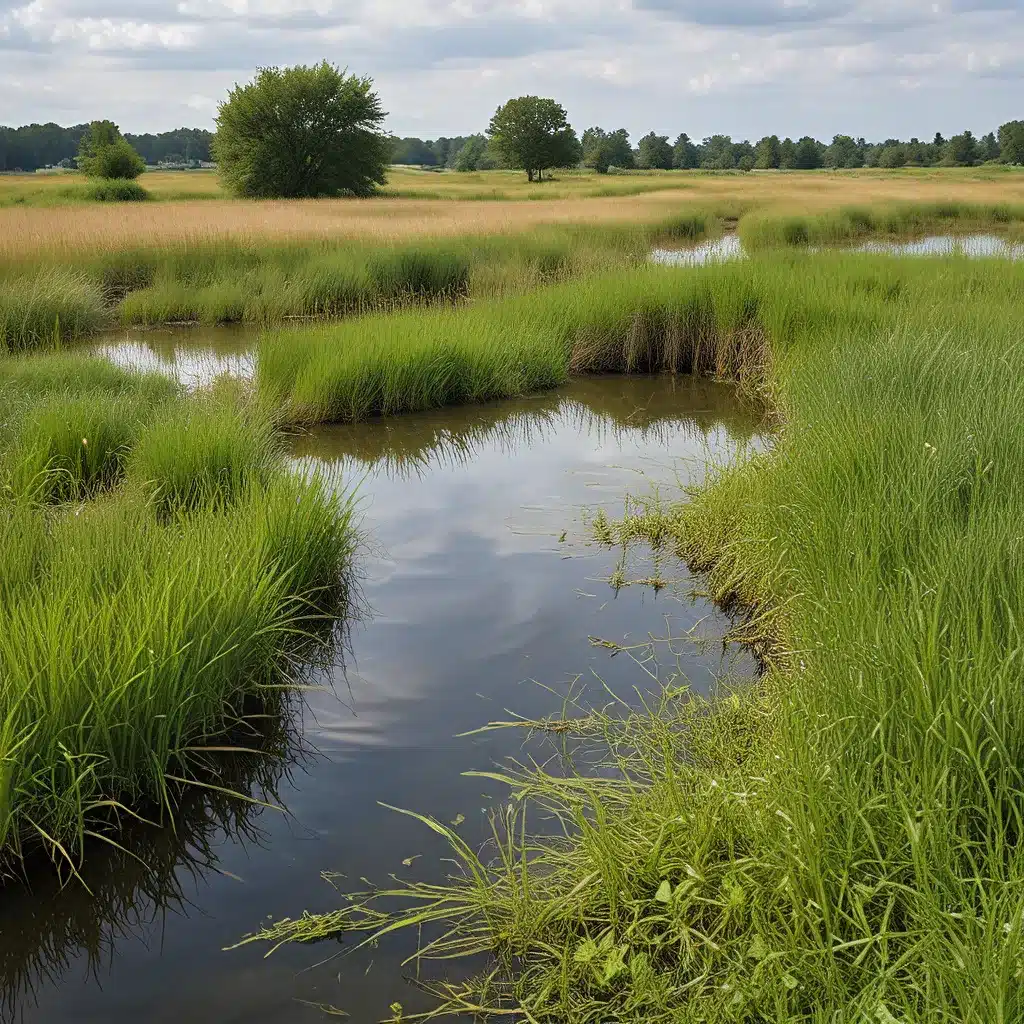
As a seasoned water treatment professional, I’ve always been fascinated by the incredible power of nature to solve our most pressing environmental challenges. And when it comes to wastewater management, one of the most promising nature-based solutions out there? Constructed wetlands.
Wetlands to the Rescue
Now, I know what you’re thinking – wetlands? Isn’t that just a fancy term for a swamp? Well, my friend, let me tell you, these are no ordinary swamps. Constructed wetlands are designed and engineered to mimic the natural filtration and treatment processes that happen in their wild counterparts. And let me tell you, they are absolute champs when it comes to cleaning up our wastewater.
Recent studies have shown that these remarkable ecosystems can remove up to 90% of pollutants from wastewater, including nutrients, heavy metals, and even some persistent organic compounds. And the best part? They do it all using the power of carefully selected plants, microbes, and the natural ebb and flow of water.
It’s like Mother Nature’s own little wastewater treatment plant, just without the concrete and the energy-guzzling machinery. And let me tell you, when you see these constructed wetlands in action, it’s like watching nature work its magic right before your eyes.
The Unexpected Benefits of Wetlands
But the benefits of constructed wetlands don’t stop at just cleaning up our wastewater. Oh no, my friends, these natural wonders have so much more to offer.
For starters, they’re an absolute haven for wildlife. I’m talking everything from migrating birds to endangered amphibians. These wetlands provide crucial habitat and refuge for all sorts of critters, helping to preserve biodiversity in our increasingly developed landscapes.
And let’s not forget about the recreational and aesthetic benefits. Constructed wetlands can transform once-barren landscapes into vibrant, green oases, complete with meandering trails, serene ponds, and all sorts of wonderful photo opportunities. It’s a win-win for both the environment and the community.
As the UN-Water report on multi-functional wetlands so eloquently states, these nature-based solutions can “reduce pollution of freshwater and coastal ecosystems while still preserving their biodiversity and ecological functions.” It’s like getting the best of both worlds – clean water and a thriving, healthy ecosystem.
Tackling the Challenges of Wastewater
Now, I know what you’re thinking – if these constructed wetlands are so amazing, why isn’t everyone using them? Well, my friends, the truth is, there are still some challenges to overcome.
For one, these systems can require a significant amount of land, and in many urban and suburban areas, space is at a premium. But innovative solutions like horizontal levees are proving that we can get creative with the space we have, incorporating these wetlands into our existing infrastructure.
And then there’s the question of cost. While constructed wetlands can be more cost-effective than traditional wastewater treatment plants in the long run, the upfront investment can be a tough sell for some municipalities. But as the technology continues to evolve and more communities see the long-term benefits, I’m confident we’ll start to see these nature-based solutions become more and more common.
The Future of Water Treatment
So, where do we go from here? Well, my friends, the future of water treatment is looking pretty darn green. As more and more communities embrace the power of constructed wetlands, I can’t help but feel a sense of excitement and optimism.
Imagine a world where our wastewater isn’t just a burden to be dealt with, but a valuable resource that we can use to nurture and sustain our natural ecosystems. Where our water treatment infrastructure isn’t just a necessary evil, but a vibrant, living system that provides countless benefits to the communities it serves.
It’s a future that’s well within our reach, and it all starts with embracing the incredible power of nature-based solutions. So, who’s ready to dive in and get their hands dirty (or should I say, their feet wet?) in the world of constructed wetlands?
If you’re intrigued and want to learn more, I’d encourage you to check out Inland Waters Inc. – they’re at the forefront of this exciting field, and I’m sure they’d be more than happy to chat about how you can bring the magic of constructed wetlands to your community.
So, what are you waiting for? The future of wastewater management is just a step away, and it’s greener than ever before. Let’s dive in and see what nature can do!


